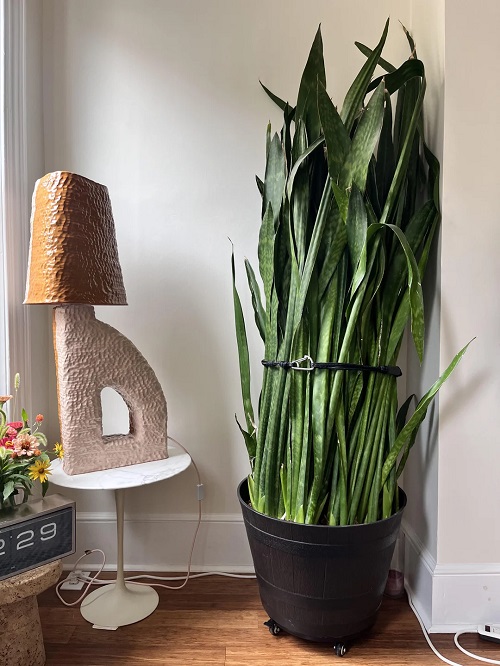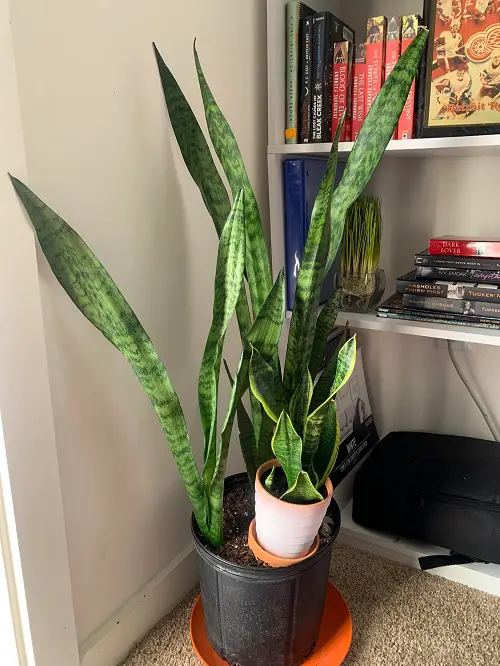Sansevierias can grow quite big if unchecked! Lucky for you, we are here to tell you What To Do With Extra Tall Snake Plants!

A tall snake plant (Sansevieria trifasciata) is beautiful if it stays upright throughout. However, its towering leaves may topple over and break, ruining the aesthetics and pressuring the plant with its weight—so here’s what you do with extra-tall snake plants!
What To Do With Extra Tall Snake Plant
1. Prune Tall Leaves
Some leaves may grow taller than others and create an unusual look that occasionally needs a little adjustment to maintain balance. They grow about five feet tall indoors and even more elevated sometimes, but it’s best to prune these before things get out of control.
Grab your shears and cut the leaf close to the soil. The ideal season to prune is summer or spring in your snake plant’s growth phase since it can recover faster. Target drooping, lanky leaves so they don’t drastically change your plant. Here’s how to do it.
2. Use Ties or Stakes For Support

Determine in which direction your snake plant leans, and then straighten the leaves by inserting a sturdy stake into the soil. Make sure it is long enough to reach where the stem starts bending. Then, carefully tie the foliage bundle with garden tape without disturbing it.
Use garden ties or soft string to bind a few taller leaves together near the middle. This will keep the tall leaves upright and keep them looking tame.
3. Divide Your Plant

You could also turn this challenge into an opportunity! Extra-long snake plants can be divided to make new plants and multiply these sword-shaped beauties. With division, you can target extra-long leaves without damaging the roots!
Opt for this process when it’s time to re-pot your snake plant; do it in the month of spring. And soon, you’ll be the proud plant parent of several pups that grow symmetrically. You could also use these tall plants to make room dividers.
4. Decorative Plant Cage

If the leaves are tall but scanty at the same time, and you don’t want to get your shears out, build a slick wire cage to support and keep them together. This will stop individual leaves from falling apart, provide support, and prevent breakage.
Here are more tips to keep your snake plant foliage upright.
5. Reduce the Light

A tall and thriving snake plant thrives with 8-10 hours of indirect light, having a mix of a few hours of mild early-morning sunshine. But if it’s getting too tall and you’re keeping it in too much light, slightly tweak the exposure it receives to slow down rapid growth.
This trick is best for fully grown snake plants because nothing can be done once the leaves are too long. Choose a location with under 7-8 hours of daily light and avoid direct sun. This will help your plant grow in control. While you do this, avoid keeping the snake plant in a dark spot or low light.
6. Limit its Feed

Fertilizers are meant to boost growth and vitality, and snake plants can scale up to inconvenient heights with too much feed! Typically, snake plants are fed every 6-8 weeks with a balanced 10-10-10 fertilizer diluted to half its strength.
However, if you see vigorous growth, reduce fertilization and aim for application every 10-12 weeks. Feed with a low-nitrogen fertilizer like 5-10-10 in one-quarter strength to keep foliage growth in check.
Snake plants are native to poor, rocky soil and don’t need much nutritional supplements.


